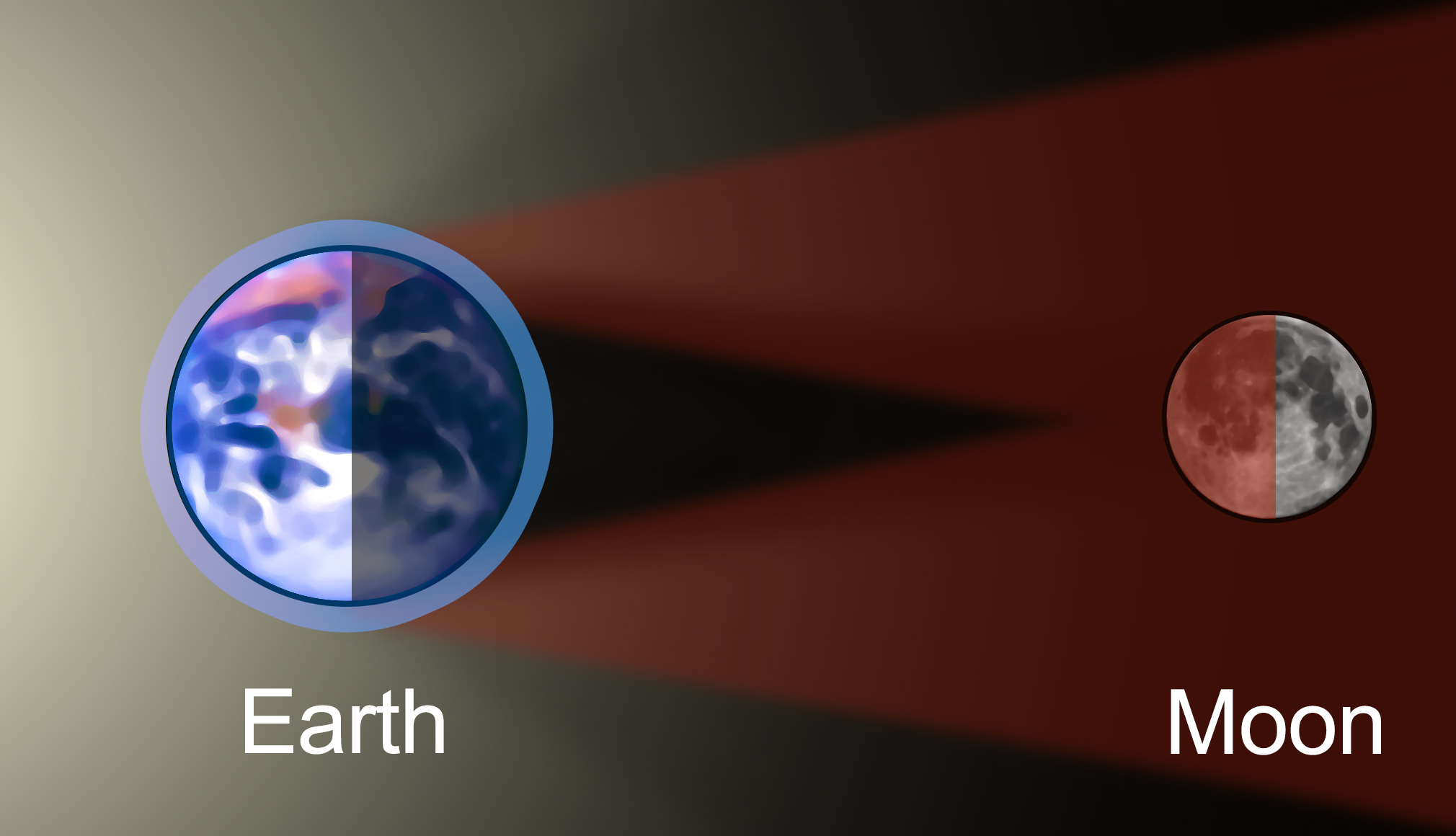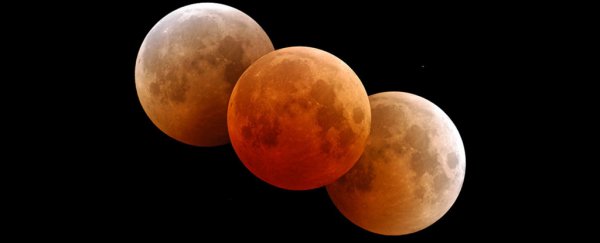A blood moon is a non-scientific description of the Moon's sometimes-rusty color when it goes through a total lunar eclipse.
Less commonly, the term 'blood moon' can also refer to a series of four total lunar eclipses, so long as they are observed from one place within a two year period. If you stay in the same spot on Earth for a decade, there's usually about four to five total eclipses that can be seen, so seeing four consecutive ones is a true rarity.
Why do blood moons look red?
Like any opaque object in the path of light, Earth blocks photons from the Sun, casting a shadow behind it into the Solar System.
Unlike our planet's rocky bulk, however, Earth's atmosphere is transparent enough to let some light through. The thin layer of gas refracts some of that light, while particles suspended in the atmosphere can scatter some wavelengths more than others, particularly shorter 'blue' colors over longer 'red' ones.
This scattering is the same reason that daylight sky appears blue, while light that can make it all the way through the bulk of the atmosphere at dawn and dusk appears orange to red.
This refraction and scattering means Earth creates a cone-like shadow with a glowing, rust tinted fringe.
 Diagram of a lunar eclipse (not to scale).
Diagram of a lunar eclipse (not to scale).
The Moon only passes through this shadow a few times a year, thanks to its relatively small size and proximity to Earth, and because it orbits Earth on a slight tilt.
While direct sunlight is completely blocked, the reddish light passing out of Earth's atmosphere bends just enough to cast a spooky 'blood stained' glow across the Moon. Check out the clip below to get a different perspective on the eclipse.

Once in a blue moon, you may even get what NASA calls a Super Blue Blood Moon, a seemingly contradictory occurrence that is even more rare.
All topic-based articles are determined by fact checkers to be correct and relevant at the time of publishing. Text and images may be altered, removed, or added to as an editorial decision to keep information current.
